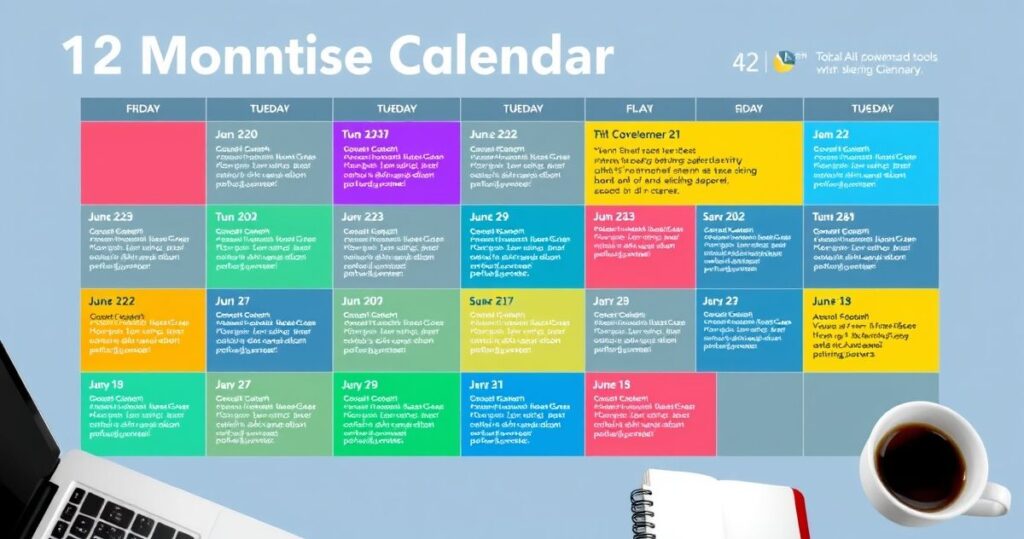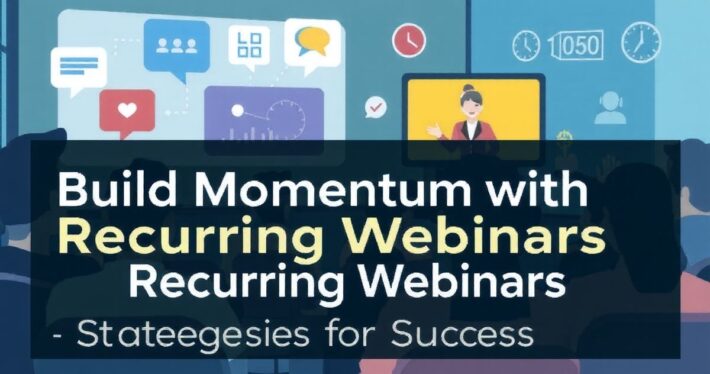Creating a 12-month calendar for recurring webinar growth.

Building a 12-Month Webinar Calendar: Your Blueprint for Recurring Growth
Creating a 12-month webinar calendar isn’t just about scheduling events—it’s about crafting a strategic roadmap that ensures consistent audience engagement, predictable growth, and higher conversions. Whether you’re a seasoned marketer or just starting out, a well-planned webinar calendar can transform your outreach efforts and turn occasional wins into sustained success.
Think of it this way: Would you build a house without a blueprint? Probably not. Similarly, a webinar calendar is the blueprint for your year-long strategy. It helps you stay organized, align with your business goals, and create content that resonates with your audience. And with AI-powered tools at your disposal, the process has never been easier.
Why a 12-Month Webinar Calendar Matters
Let’s be honest—without a plan, it’s easy to fall into the trap of reactive marketing, scrambling to put together last-minute webinars that lack cohesion or impact. A 12-month calendar keeps you proactive, ensuring you’re consistently providing value to your audience while driving your business objectives forward.
Here’s what a well-structured calendar can do for you:
- Maintain Consistent Engagement: Regular webinars keep your audience invested and looking forward to your next event.
- Simplify Content Creation: Knowing your topics in advance allows you to prepare high-quality, relevant content.
- Boost Conversions: Strategically timed webinars can align with seasonal trends, product launches, or sales cycles.
- Save Time and Reduce Stress: A clear plan eliminates the chaos of last-minute planning.
Step 1: Define Your Goals and Themes
Before diving into scheduling, ask yourself: What do you want to achieve with your webinars? Are you aiming to generate leads, nurture existing customers, or establish thought leadership? Once you’ve identified your goals, create overarching themes for each quarter or month.
For example:
- Q1: Kick off the year with educational webinars on industry trends.
- Q2: Focus on product demonstrations and case studies.
- Q3: Dive deeper into advanced topics for your niche audience.
- Q4: End strong with seasonal promotions and year-end reviews.
Pro tip: Use AI tools like the Slide Outline Creator to ensure your webinars strike the perfect balance between education and engagement.
Step 2: Map Out Key Dates and Events
Start by identifying key dates that align with your business and industry. These could include:
- Industry conferences or trade shows
- Product launches or updates
- Seasonal trends (e.g., holiday shopping, tax season)
- Cultural or global events (e.g., Earth Day, Black Friday)
For instance, if you’re in the fitness industry, January is prime time for webinars on New Year’s resolutions and wellness goals. And let’s not forget about Black Friday—perfect for a webinar showcasing exclusive offers and bonuses.
Step 3: Leverage AI Tools for Efficient Planning
Now, here’s where it gets interesting. AI-powered webinar tools can take the guesswork out of planning and execution. Here’s how you can use them:
- Slide Outline Creator: Generate structured, engaging slide decks tailored to your audience.
- Webinar Offer Builder: Craft irresistible offers that position your product or service as the obvious choice.
- High-Value Bonus Brainstormer: Create bonuses that multiply the perceived value of your offer.
- Risk-Reversal/Guarantee Generator: Craft guarantees that make saying “yes” feel like a no-brainer.
Real-World Example: How Company X Streamlined Their Calendar
Let’s take a look at Company X, a mid-sized SaaS company. They struggled with inconsistent webinar attendance and low conversion rates. By implementing a 12-month calendar and leveraging AI tools, they transformed their approach:
- Q1: Focused on educational webinars about industry trends, using the Slide Outline Creator to craft engaging content.
- Q2: Hosted product demo webinars with tailored offers generated by the Webinar Offer Builder.
- Q3: Ran advanced training sessions, paired with high-value bonuses brainstormed using AI tools.
- Q4: Closed the year with a webinar featuring exclusive holiday discounts and strong guarantees.
The result? A 35% increase in attendance and a 50% boost in conversions—all while reducing planning time by 40%.
Step 4: Plan for Flexibility and Optimization
While a 12-month calendar provides structure, it’s essential to leave room for flexibility. Monitor your results after each webinar and use the data to optimize future events. Ask yourself:
- What resonated most with your audience?
- Where did you see the highest engagement or conversions?
- How can you improve for next time?
Step 5: Promote and Amplify Each Webinar
Your calendar is only as good as your promotion strategy. Use a mix of email marketing, social media, and paid ads to ensure each webinar reaches your target audience. Don’t forget to repurpose webinar content into blogs, social posts, or YouTube videos to maximize its lifespan.
Final Thoughts: Your Path to Predictable Growth
Creating a 12-month webinar calendar may seem daunting at first, but with the right tools and strategy, it’s entirely achievable—and highly rewarding. By staying organized, leveraging AI-powered tools, and consistently delivering value, you’ll build a loyal audience and drive sustainable growth for your business.
So, what’s stopping you? Grab your calendar, fire up those AI tools, and start planning your way to recurring webinar success.



